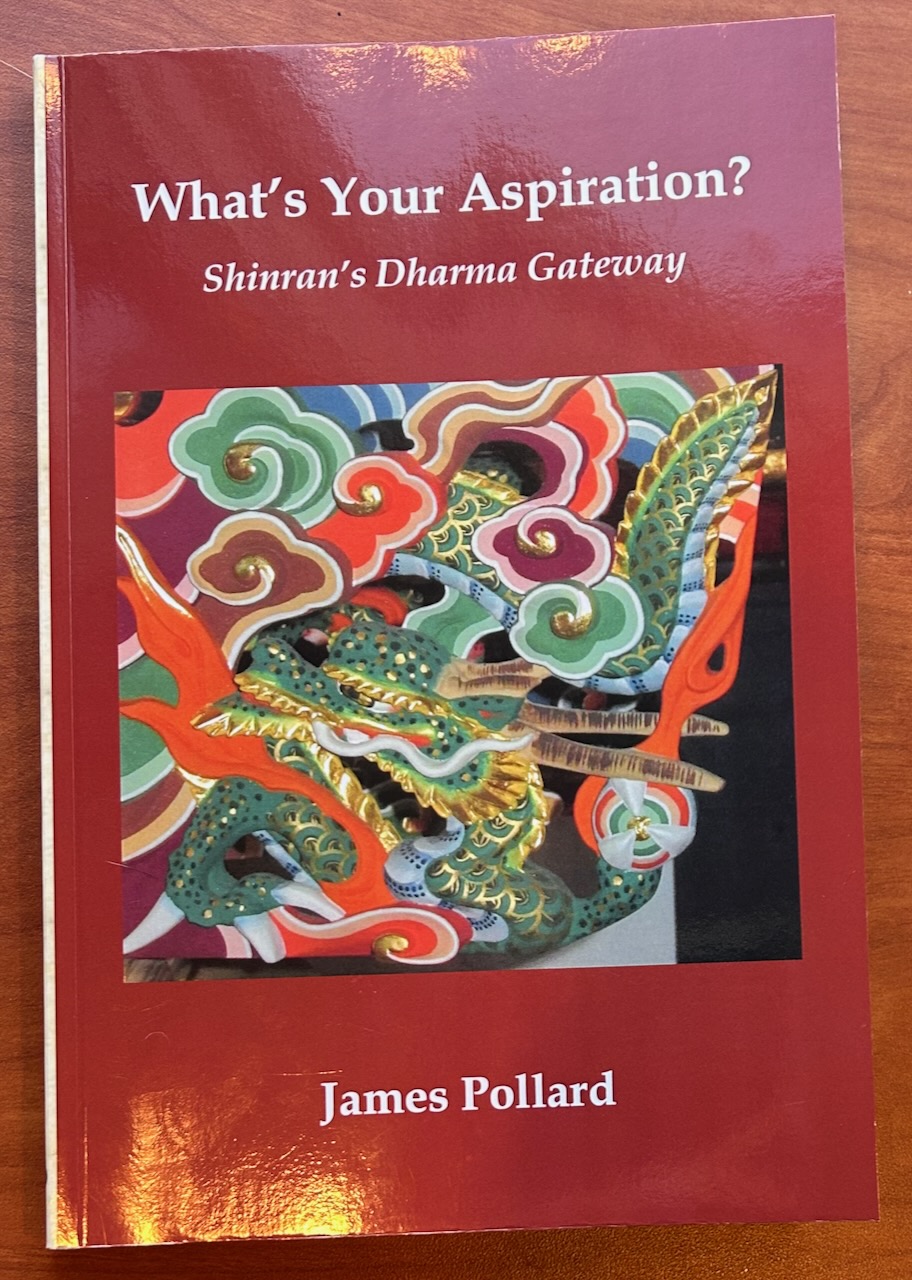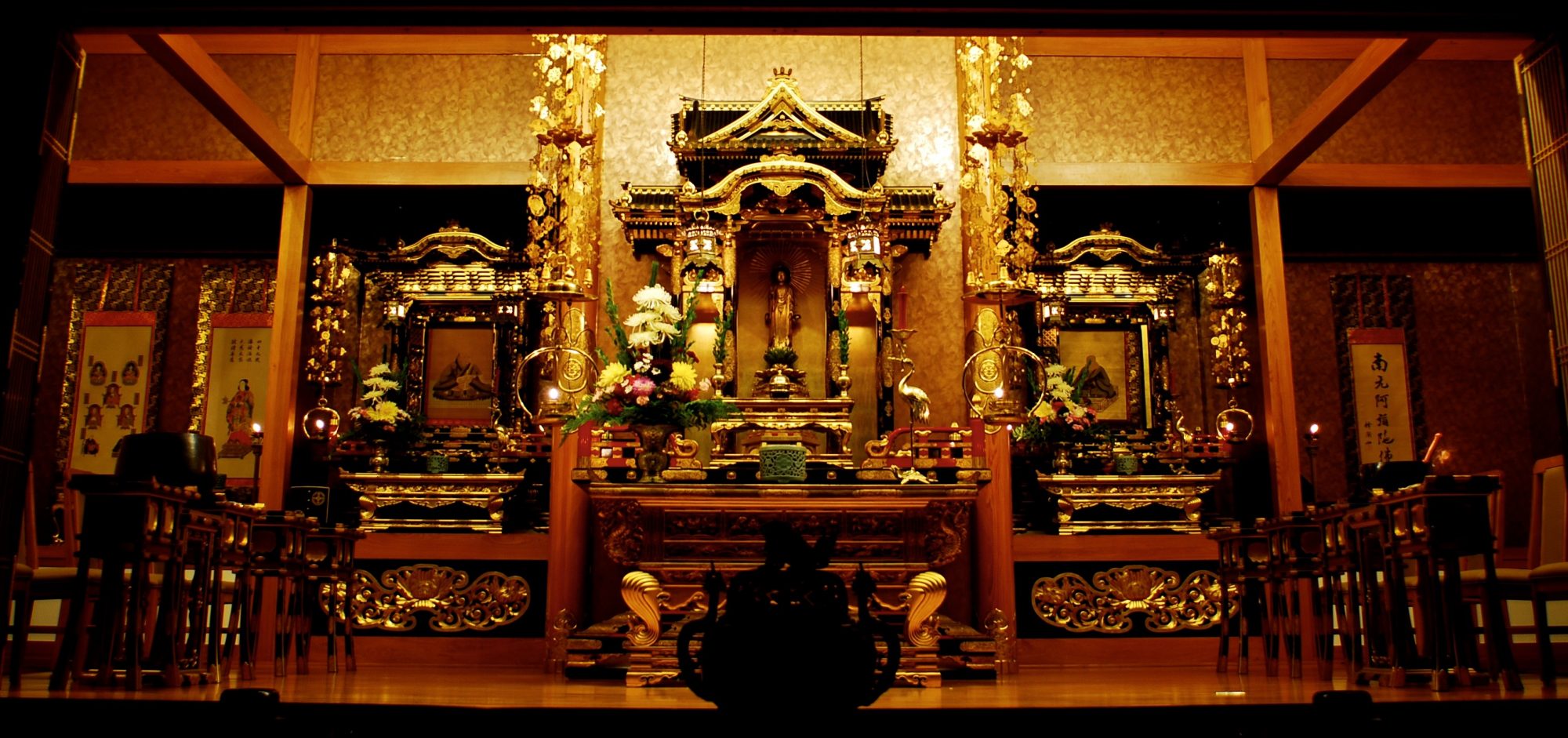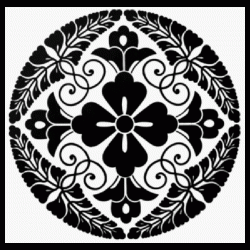
By Rev. Patti Nakai
A frog jumped in. Bashō became the frog, and he himself jumped into the deepest part of his life. There was the world of nothing but the sound of the splash.
-Rev. Gyoko Saito (from Meditations on Death and Birth, 1983)
In his recently published book, What’s Your Aspiration: Shinran’s Dharma Gateway, (Anaheim CA: Buddhist Education Center, 2024), James Pollard, a minister assistant at Orange County Buddhist Church, quotes the above passage and focuses on “aspiration” as the gateway to jōdo shinshū (He uses lowercase in identifying Shinran’s teachings as opposed to “Jōdo Shinshū” used by organized sects).
Like his first book, Let This Be Known: Finding the Shin Buddhist Path (2020), this collection of essays isn’t for people still in the “Buddhism 101” phase of their journey. It’s meant primarily for those already familiar with this Pure Land tradition, who’d appreciate clarification of its complex terminology.
The book’s title asks what do we really want in our limited lifetime. Pollard describes personally going from worldly aspirations to aspiring for spiritual liberation. That leap comes when one encounters jōdo shinshū through a teacher or teachers (either in person or in texts).
Pollard writes:
Some of us are capable of fulfilling our lives through worldly accomplishments alone. However, others of us cannot find fulfillment in that way. We feel compelled to ask questions such as: What am I? What are birth and death? Why is my life bound up with sorrow? If we have begun to ask these ultimate or existential questions, it’s likely that we have lost confidence in the direction of our life. The inescapable feeling that life’s purpose has been undermined is a gateway to the spiritual dimension.
The term “innermost aspiration” resonated with me many years ago when Rev. Gyoko Saito, a Higashi Honganji minister, was a last-minute substitute for a Buddhism survey course because Rev. Gyomay Kubose (1905-2000), Buddhist Temple of Chicago minister, suddenly fell ill. Rather than follow Rev. Kubose’s lesson plan, Rev. Saito spoke about finding one’s true aspiration. Unable to articulate a clear answer for myself, nevertheless I was struck by something transcending my self-centered worldly ambitions.
In his book, Pollard explains in detail Pure Land’s Larger Sukhavativyuha Sutra (aka “Larger Sutra”) because Shinran found it clearly described what happened when he encountered his teacher Honen. That encounter turned around Shinran’s direction in life.
Pollard writes:
Shinran considers the Larger Sutra to be the primary exposition of liberation by hongan—the Buddha’s essential aspiration—identifying this teaching as shinshū or the “true centerpiece of Buddhism.” He devoted his life to a revaluation of Buddhist values, based on the startling message contained in the Larger Sutra. One aspect of Shinran’s revaluing is the removal of culturally-specific elements that had accreted to Buddhism over the centuries. In particular, he rejects the mysticism, escapism, and violence that characterized the religious life of his era. All of his writings amount to a commentary on the Larger Sutra and on related texts that teach liberation by hongan.
Pollard feels many people may identify as Shin Buddhists but are totally ignorant of the Larger Sutra (except for maybe chanting two verse sections in Sino-Japanese). Most of what they know about Shinran might be a couple passages from Tannisho. Those who recite nenbutsu without knowing about the Larger Sutra seem just praying to a divine savior called Amida.
Pollard writes that other Buddhist paths, notably Zen, may be more appealing with their clearly defined practices and minimal technical jargon. Pollard sees terms used by Shinran as guiding us to approach life as a whole, rather than specific instructions for attaining enlightenment. In the chapter “Beyond Opposites,” Pollard shows how Shinran’s wording forces one to see all of life encompassed as Oneness.
Shinran, along with other great Buddhist teachers, point us towards this Oneness. Spiritual liberation means breaking free of seeing ourselves and other living beings as separate and self-serving entities.
While struggling to disentangle myself from the sticky web of “rugged individualism,” I’m grateful that jōdo shinshū shows me the true reality of interconnectedness.
In a world filled with violent conflicts and with religious institutions fostering oppressive exceptionalism, we need to hear these teachings here and now. Shinran says, “Only the nembutsu is true and real.” Awakening to our immersion in Unbounded Life is truly like the sound of a splash.
-Rev. Patti Nakai served as resident minister of Buddhist Temple of Chicago

